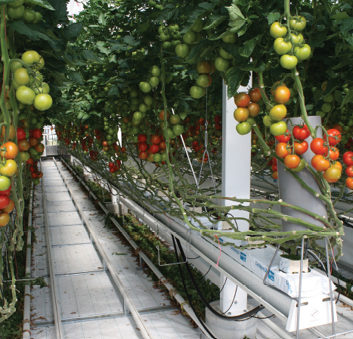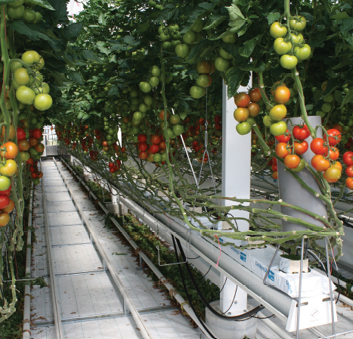By Ted Rich and Ed Knueve

The utilization of ozone technology in water treatment is well-established, particularly in scenarios where water quality presents challenges. From residential wells to small community drinking water systems, ozone plays a vital role in achieving various treatment objectives, including the removal of hydrogen sulfide and the oxidation of contaminants.
However, an intriguing application of ozone technology emerges within the realm of hydroponics—a method for cultivating plants without soil, where water serves as the primary medium for delivering nutrients. In this article, we delve into a case study of a hydroponic tomato farm in Northwest Ohio, shedding light on how ozone technology transformed crop yield and addressed water quality issues.
Anatomy of the Problem
The hydroponic operation faced significant hurdles, including a high rejection rate of 40%, primarily due to blossom end rot, and excessive fertilizer usage. A thorough water analysis uncovered a pH of 7.8, a low Oxidation Reduction Potential (ORP) of -177 mV, and 60 parts per million (ppm) of hydrogen sulfide in the source water.
The presence of hydrogen sulfide posed multifaceted challenges—it hindered fertilizer effectiveness, led to low dissolved oxygen levels, and contributed to the development of blossom end rot due to elevated pH levels. Blossom end rot, characterized by dime-sized brown spots on tomatoes, results from insufficient calcium transfer to the fruits, exacerbated by the high pH environment.
The Solution: Implementing Ozone Technology
To address these challenges, the water treatment dealer proposed the deployment of ozone technology. Ozone offered a comprehensive solution—it effectively removed hydrogen sulfide without leaving chemical byproducts, raised the ORP level, provided disinfection through organic contaminant oxidation, and introduced higher dissolved oxygen levels into the water.
Selecting the Right System
The choice of ozone system was crucial for achieving desired outcomes. A corona discharge ozone generator, coupled with a PSA oxygen concentrator, was selected to produce ozone efficiently. This system, driven by an interlock box, ensured precise monitoring and control of critical parameters, including oxygen flow and vacuum production.
Implementation and Results
The ozone system, installed downstream of the booster pump, operated efficiently, drawing water past the ozone injector. The results were remarkable—hydrogen sulfide levels were completely eliminated, pH levels lowered from 7.8 to 7.04, and ORP levels increased from -177 mV to +225 mV.
These improvements translated into tangible benefits for the hydroponic farm. Rejection rates plummeted from 40% to less than 3%, fertilizer costs were halved, and the interval from planting to first harvest shortened by 28 days. Most notably, total crop yield surged by over 300%.
Conclusion
The case study of this hydroponic tomato farm underscores the transformative potential of ozone technology in agriculture. By addressing water quality issues effectively, ozone not only optimized crop yield but also reduced operational costs, yielding a rapid return on investment.
As hydroponic farming gains traction, driven by concerns for environmental sustainability and resource efficiency, the integration of ozone technology offers a promising avenue for enhancing productivity and ensuring the viability of future agricultural practices.
More on Hydroponics and Ozone can be found here: https://www.oxidationtech.com/applications/ozone-use-in-hydroponic-greenhouses.html
Read more: A Look at Ozone in Hydroponics Applications: A Case Study of Improved Tomato Crop Yield
